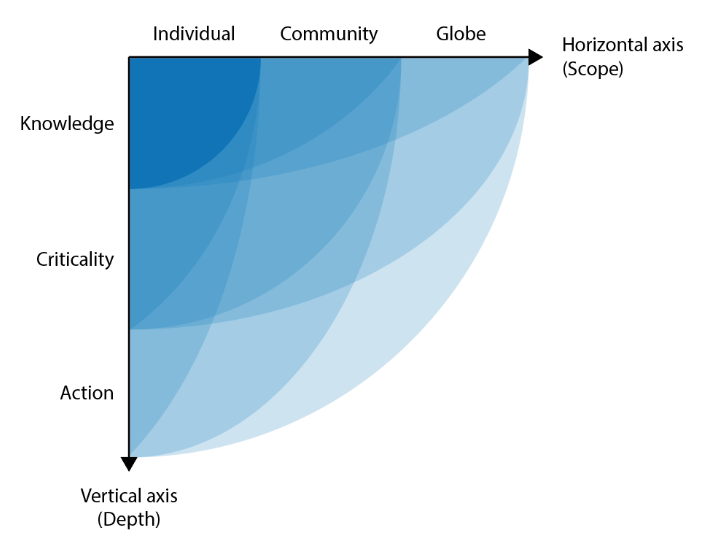CALE Curriculum Framework
The CALE Curriculum Framework is a conceptual tool to help teachers move from theory to practice in designing activities, lessons, units and courses that incorporate critical action.
The CALE Framework has six components, divided into two axes. The vertical axis includes components that move students “deeper” toward action. The horizontal axis increasingly expands the scope of the students’ critical action. The framework includes design questions elaborated to help teachers advance their designs in these two dimensions.

Vertical Axis:
(1) Knowledge: Critical Action begins with developing an understanding of the issue being addressed. This goes beyond helping students acquire knowledge within a domain, to help them develop abilities to acquire, assess, and build new knowledge.
(2) Criticality: The process of social transformation implies a value judgment on the forces and structures that affect the issue and how they might constrain or empower their actions.
(3) Action: Critical Action Education aims to reinforce students’ sense of agency and to empower them as transformative agents, shifting their perspective from “that’s just the way things are” to “that’s a problem that I can act upon.”
Horizontal Axis:
(1) Individual: This component aims to provide opportunities for students to explore their intersections with the issue, helping each student create personal meaning and purpose in learning and develop a sense of direction.
(2) Community: aims to help students work collaboratively, and recognize the value of community in any action.
(3) Globe: Problems such as climate change, social injustices and economic inequalities are global, and the efforts to find solutions must transcend borders. This component aims to help students recognize and understand how the problems—and their actions—affect the whole world.